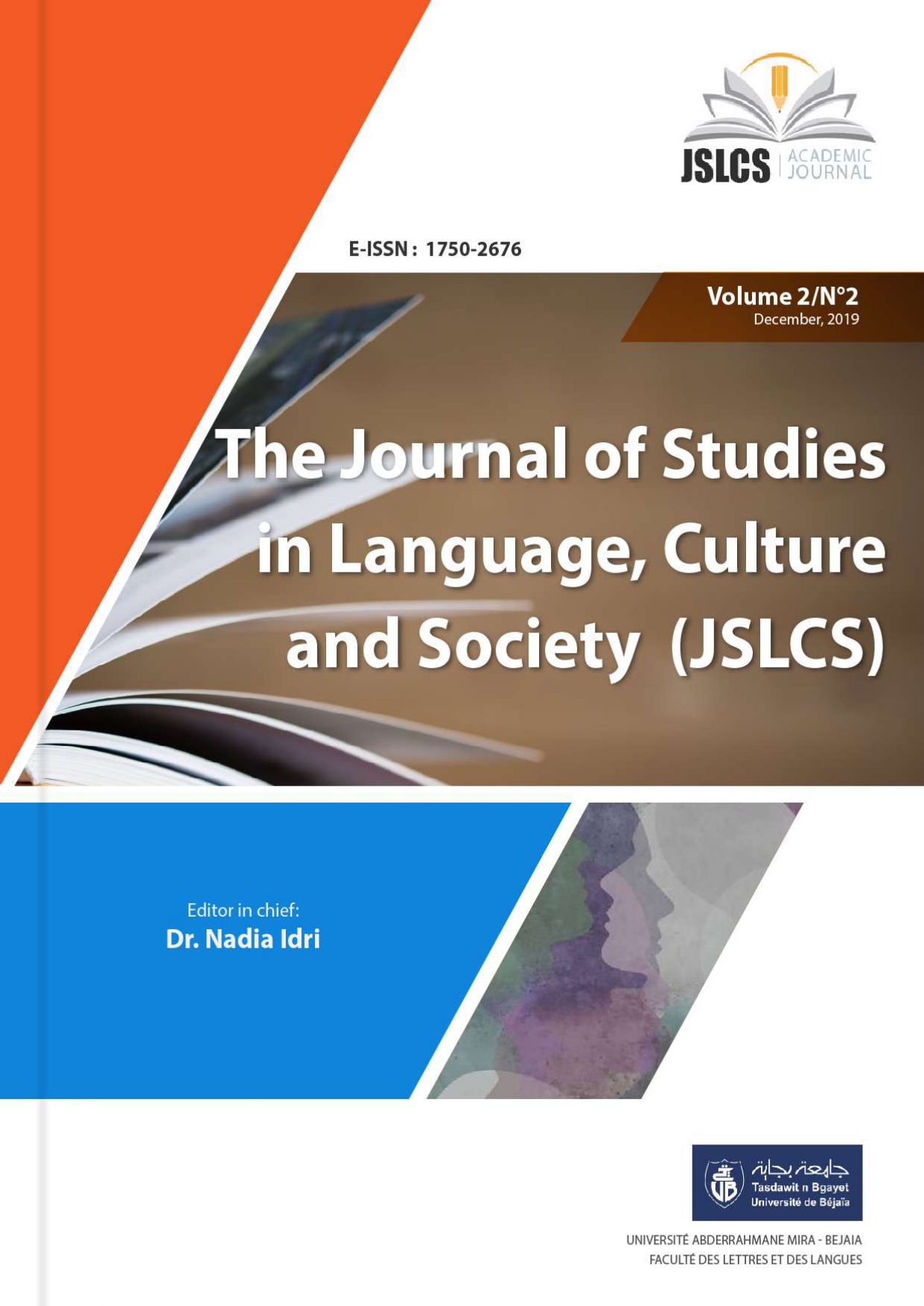Type A, Or Type B, That Is The Question; A Critical Examination Of Productoriented And Process-oriented Syllabuses In Foreign Language Learning And Teaching
Keywords:
Foreign language learning and teaching, Process-oriented, Product-oriented, Syllabus, Type A, Type BAbstract
The current paper aims at examining and comparing two major syllabus types, Type „A‟ and Type „B‟, by reviewing the literature on three product-oriented (type A) syllabus sub-types namely: structural, notional-functional and situational syllabuses and three process-oriented (type B) syllabus sub-types notably task-based, process and content-based syllabuses. The discussion focuses on the characteristics of both types, the different views of language and language learning that influenced the classification of the two syllabus types as well as the benefits and drawbacks of each type in foreign language learning and teaching. At the end of the paper, foreign language teachers are invited to adopt the eclectic approach by combining both syllabus types. This combination will, therefore, help in counteracting the weaknesses of both types and provide teachers with opportunities to address their learners‟ diverse needs and meet their expectations.
References
- Baleghizadeh, S. (2015). The procedural syllabus and task syllabus: how similar, how different? HOW, 22(2), 104-113.
- Bucur, N.F. (2014). Some considerations on foreign language syllabus design. Challenges of the knowledge society. Education and Sociology. 908-915.
- Chandee, P. (1991). Three different approaches to syllabus design in language teaching: the advantages and disadvantages, ABAC Journal, 11(2), 20-28.
- Christison, M.A. and Murray, D.E. (2014). What English language teachers need to know volume III: designing curriculum. New York: Routledge.
- Elaggoune, A. (2015). Integrating the content-based instruction into the American civilization class. Arab World English Journal, 61-69.
- Finney, D. (2002). The ELT curriculum: a flexible model for a changing world. In J.C. Richards & W.A. Renandya (eds.), Methodology in language teaching: an anthology of current practice. (pp. 69 – 79). Cambridge: Cambridge University Press.
- Hasan, A.S. (2007). The envisaged syllabus for teaching English as a foreign language. Damascus University Journal, 23(2), 45-61.
- Hutchinson, T. & Waters, A. (1987). English for specific purposes: a learning-centred approach. Cambridge: Cambridge University Press.
- Johnson, K. (2009). Foreign language syllabus design. In K. Knapp, B. Seidlhofer & H.G. Widdowson (eds), Handbook of foreign language communication and learning. (pp. 309-340). Berlin: Walter de Gruyter.
- Kara, S. (2001). The foreign language syllabus: design, evaluation and renewal. Revue Sciences Humaines, 15, 67-84.
- Knapp, K., Seidlhofer, B., & Widdowson, H.G. (eds). (2009). Handbook of foreign language communication and learning. Berlin: Walter de Gruyter.
- Krahnke, K. (1987). Approaches to syllabus design for foreign language teaching. Language in education: theory and practice. Englewood Cliff, NJ: Prentice Hall Regents.
- Kumaravadivelu, B. (2006). Understanding language teaching: from method to postmethod. Mahwah: Lawrence Erlbaum Associates.
- Long, M.H. & Crookes, G. (1991). Three approaches to task-based syllabus design, University of Hawai‟i Working Papers in ESL, 10(1), 1-36.
- Long, M.H. and Crookes, G. (1992). Three approaches to task-based syllabus design. TESOL Quarterly, 26(1), 27-56.
- Long, M.H. & Crookes, G. (1993). Units of analysis in syllabus design – the case for task. In G. Crookes & S.M. Gass (eds), Tasks in a pedagogical context: integrating theory and practice. (pp. 9-54). Clevedon, UK: Multilingual Matters.
- Markee, N. (1997). Managing curricular innovation. Cambridge: Cambridge University Press.
- Markee, N. (2015). The handbook of classroom discourse and interaction. Oxford: Wiley-Blackwell.
- Nation, I.S.P. & Macalister, J. (2009). Language curriculum design. New York: Routledge.
- Nunan, D. (1988). Syllabus design. Oxford: Oxford University Press.
- Nunan, D. (2012). Learner-centered English language education: the selected works of David Nunan. New York: Routledge.
- Richards, J.C. (2001). Curriculum development in language teaching. Cambridge: Cambridge University Press.
- Richards, J.C. & Rodgers, T.S. (1986). Approaches and methods in language teaching. Cambridge: Cambridge University Press.
- Robinson, P. (2011). Task-based language learning: a review of issues. Language Learning: A Journal of Research in Language Studies. 1-36.
- Saraswathi, V. (2004). English language teaching: principles and practice. India: Orient Longman.
- Skehan, P. (2003). Task-based instruction. Language Teaching, 36, 1-14.
- Spector-Cohen, E., Kirschner, M. & Wexler, C. (2001). Designing EAP reading courses at the university level. English for Specific Purposes, 20, 3767-386.
- Stoller, F. (2002). Project work: a means to promote language and content. In J.C. Richards & W.A. Renandya (eds.), Methodology in language teaching: an anthology of current practice. (pp. 107-120). Cambridge: Cambridge University Press.
- Ur, P. (1996). A course in language teaching: practice and theory. Cambridge: Cambridge University Press.
- Van den Branden, K. (2006). Introduction: task-based language teaching in a nutshell. In author. Task-based language education: from theory to practice. (pp. 1-10). Cambridge: Cambridge University Press.
- Van der Walt, J. (1990). Theory and practice in second language syllabus design. Per Linguam, 6(1), 71-80.
- Wilkins, D.A. (1972). Grammatical, situational and notional syllabuses. Proceedings of the 3rd International Congress of Applied Linguistics. Heidelberg: Julius Groos Verlag. 254-265.
- Wilkins, D.A. (1976). Notional syllabuses: a taxonomy and its relevance to foreign language curriculum development. Oxford: Oxford University Press.
- Wilkins, D.A. (1994). Language, language acquisition and syllabus design: some recent issues. English Teaching, 49, 41-56.
- Yalden, J. (1987). Principles of course design for language teaching. Cambridge: Cambridge University Press.








